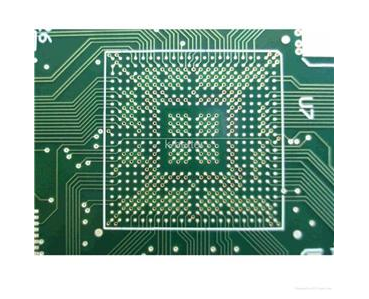PCB board factory: two common problems in circuit board solder mask printing
Under the fierce market competition in the PCB circuit board industry today, production technology is one of the main ways to create fast delivery, reduce costs, and improve quality. Here is an explanation of the two PCB board production processes often appearing, but many PCB manufacturers do not know How to improve the problem.
1. In the production process of the circuit board, the surface of the photosensitive solder mask black and white oil that often appears after development has a layer of black and white ash, which can be wiped off with dust-free paper.
Similar problems have been seen in no less than ten circuit board factories. Everyone who asked for advice said that it was baked to death during pre-bake, which caused unclean development. They generally used the method of shortening the baking time. To solve this problem, the result was counterproductive. When asked about the conditions of their baking sheets, they were mostly at 75 degree Celsius*25-35 minutes, printing on both sides at the same time.

However, the supervisor of the welding room (dry area) of the PCB board factory should be able to solve this problem by himself, and the simplest problem is often worsened by the unskilled people. I have seen a PCB board manufacturer’s welding room supervisor appear After such a problem, the griller was ordered to bake the photosensitive white oil board at 75 degree Celsius*20 minutes, and the exposure ruler achieved 8 levels of residue. The result was a white fog on the whole board after the development. However, the supervisor was confused and gave the company. Bring great losses.
The above problem is actually very simple. The main reason is that the photosensitive black and white oil baking time is insufficient, and the exposure energy is too low, causing the photosensitive black and white oil bottom layer to not fully achieve the effect of heat and light dual curing, so the surface layer will fall off after development The black and white oil is in powder form, which will appear on the surface after being dried by the developing machine, which can be wiped off with dust-free paper.
To solve this problem, we only need to pre-bake for a long time. Generally, the condition of pre-bake photosensitive black and white oil is 75 degree Celsius+5 degree Celsius*40-50 minutes, depending on the thickness of the board. Use 21-frame exposure to achieve 11-level residual and 12-level clean.
If you encounter similar problems, please refer to the above process, I believe it will achieve the desired effect.
2. When printing solder mask oil, it is often found that there is oil and development in the socket.
Similar problems have also been encountered by several PCB board factories. The main reason is that there is oil in the hole after development and the hole is not clean, and it is used for back flushing, or the flushing is not clean. Finally, the caustic soda is used for backwashing, but the result is still in the hole. The oil still can't be washed off, and the residual oil in the hole can't be removed at the end, resulting in scrap.
Such a problem will not be scrapped if it is properly handled. The main reason for scrapping is that the silk screen is not well controlled during printing, which makes the oil into the hole too serious. During pre-bake, the oil in the hole is too thick, can't the oil in the hole be completely re-developed? We can do a test and use a small blade to pick out the oil in the hole. It is certain that the oil in the hole is thin. If the thin oil is re-developed, the oleoresin bond on the wall of the hole cannot be washed away.
Why can't I wash it off again with caustic soda? When the ink itself is not pre-baked, the ink is soaked in Na2CO3 and soaked in caustic soda to be killed by the attack of two chemical yao waters, and the color of the ink is immersed in the base material of the hole wall. It's like the common ink in our lives on clothes, soaked in yarn, and can't be washed off. In the end, there is a layer of green oil in the hole, which causes scrap.
Having said so many problems, in order to solve this problem, the circuit board manufacturer has done many experiments. Once the company’s QC department found that the QC staff checked that there was oil in the hole of the 100PNL board that could not be washed away, and took the 100PNL board. Return at 75°C for 10 minutes, and then develop. The result is that 100% of the plates are fully developed. Then take the oily plate in the 20PNL hole without returning and develop directly. As a result, 70% of the plates are still not clean. The above proves that the If the oil is not completely pre-baked, the re-development is wrong.
Mainly, the printer should be controlled to prevent the ink from entering the hole too seriously. If there is oil in the hole after development, it can be re-baked and re-developed. Do not continue to develop, or directly use caustic soda to re-foam to avoid scrapping.